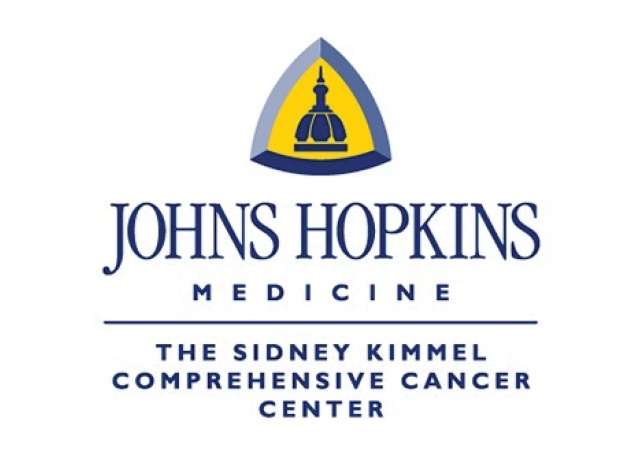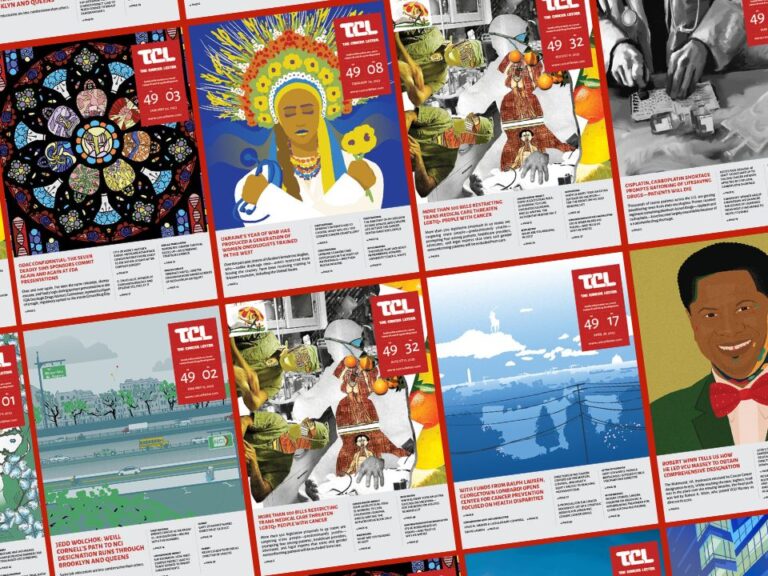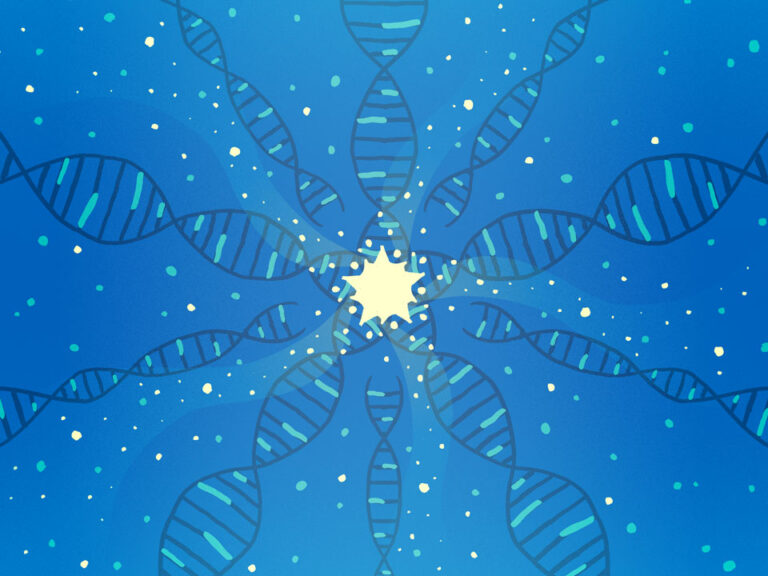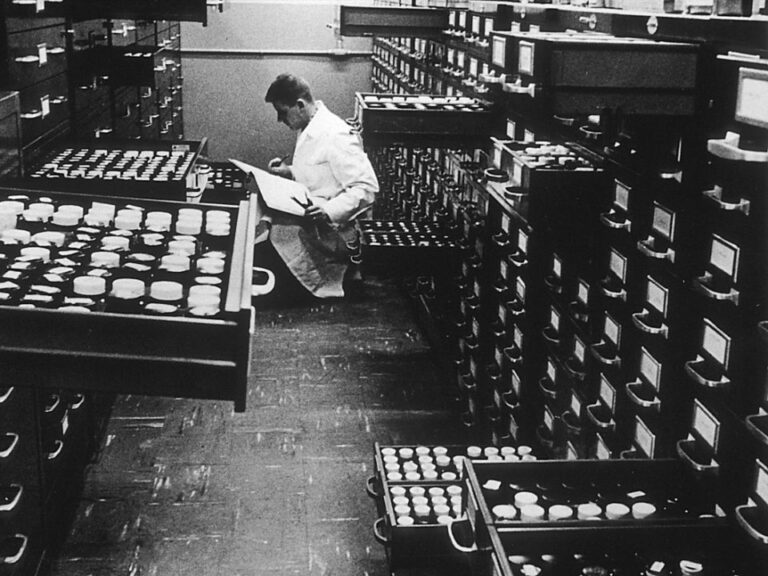

What drew Jim Allison to T cells, Hagop Kantarjian to leukemia, or Betty Ford and Nancy Reagan to breast cancer advocacy?
The Cancer History Project answers these questions—and preserves stories about the people who have made a major impact on the field of oncology. The Cancer History Project’s top 25 most-read stories of 2023 demonstrate a profound interest in how people in oncology get things done.
Founded in 2021, the Cancer History Project partners with 58 cancer centers, advocacy groups, and other initiatives to preserve the field’s history by digitizing archives, republishing books, conducting oral histories, and more.
Some archives continue to capture attention, year after year. Simone’s Maxims, the beloved little blue book by Joseph V. Simone, made available as a free download by his family, has made it into the top 25 stories every year since the project was founded (The Cancer Letter, Dec. 21, 2022; Dec. 17, 2021).
Other articles inspire anew: the Cancer History Project took the cue from the 2022 popularity of a brief historical article about Betty Ford’s breast cancer treatment (The Cancer Letter, June 25, 2021) and undertook a deeper exploration of breast cancer in the White House.


This series, led by Stacy Wentworth, assistant professor of radiation oncology at Wake Forest University School of Medicine and Atrium Health Wake Forest Baptist Comprehensive Cancer Center, appears twice in the top 25 this year, with a panel discussion and an in-depth historical article.
The Cancer History Project continued to grow in 2023, building its cancer survivorship and Black History Month series, as well as publishing oral histories about the early days of cancer research.
Seven articles featuring the Cancer History Project Podcast appear in our top 25 this year, including our top podcast of the year (according to Spotify Wrapped): “Fred Appelbaum’s ‘Living Medicine’ tells the story of bone marrow transplantation and Don Thomas’s discoveries.”
Two of the podcasts featured are from the Cancer History Project’s cancer survivorship series, spearheaded by Deborah Doroshow, assistant professor of medicine at the Tisch Cancer Institute, Icahn School of Medicine at Mount Sinai, and a historian of medicine, “Sandra Hillburn on the CMV treatment that saved her life from GBM,” and “Chris Lundy had one week to live; 52 years later, he is the longest living BMT recipient at the Hutch.”
One podcast from this series, “How Beth Carner went from six weeks left to live with stage 4 colon cancer to complete remission,” appears in The Cancer Letter’s top 25 stories of the year.
The Cancer History Project, with its institutional contributors who are dedicated to preserving oncology’s history, continues to be a valuable resource.
The most prolific contributors of 2023 have published profiles, videos, podcasts, primary documents, and obituaries as part of this continued project.
The contributors who published the most in 2023 are:
If you would like your institution to become a contributor of the Cancer History Project, contact admin@cancerhistoryproject.com.
The top 25 most-read articles in 2023 follow:
1
Jim Allison believed in the power of T cells—when hardly anyone else did
By Cancer History Project | Jan. 27, 2023


Throughout Jim Allison’s early career, the field of oncology appeared to be unfazed by his T cell research.
Allison’s introduction to the now-famed immune cell came in an undergraduate immunology course, where even the professor was apprehensive about Allison’s fascination with the recently discovered T cells.
“I remember going to see the professor after class and asked, ‘Well how does that work? How do they recognize that something is wrong?’” Allison, a Nobel laureate whose research led to the discovery of the T-cell antigen receptor and the anti CTLA-4 antibody ipilimumab, and director of James P. Allison Institute, Regental Chair of Immunology, and vice president of immunobiology at MD Anderson Cancer Center, said to The Cancer Letter. Allison is also the Olga Keith Wiess Distinguished University Chair for Cancer Research and executive director of the Immunotherapy Platform.
“And he said, ‘Well, nobody knows.’ He didn’t even think there was such a thing as T cells, because he was an antibody guy, through and through. He just thought it was some kind of weird macrophage that picked up an antibody molecule.”
Allison was not convinced. He wanted to understand how these cells worked.
2
Remembering Jane Cooke Wright, a Black woman, who was among seven founders of ASCO
By Edith P. Mitchell, MD | Feb. 19, 2021


Edith Mitchell: It is a great privilege and honor to have the opportunity to represent the National Medical Association in this tribute to Dr. Jane Cooke Wright. I first met Dr. Wright during an ASCO meeting and maintained subsequent contact.
She is affectionately known in the cancer research community as the Mother of Chemotherapy. She is not only known as the Mother of Chemotherapy, but Dr. Wright is listed in the Women Pioneers of Medical Research and among the top Medical Researchers.
As a researcher, physician, administrator, teacher, mentor, educator, her many discoveries have brought continued health into the lives of millions of people. Across the board, doctors and research scientists dedicated themselves to find cures and treatment for some of the most severe and significant diseases that have challenged mankind for many ages.
Related:
- Jane Cooke Wright: Personal photographs, Feb. 19, 2021
3
Exhibit: When cigarette filters were made of asbestos
By Alan Blum, MD | April, 13, 2023


In 1952, using the popular new medium of television, the P. Lorillard Tobacco Company sponsored “scientific” demonstrations to show the efficacy and implied health benefits of its KENT Micronite filter. The campaign also featured advertisements in medical journals. Although the ads did not disclose the composition of “Micronite,” the material that Lorillard touted as “so safe, so effective it has been selected to help filter the air in hospital operating rooms” and that was used “to purify the air in atomic energy plants of microscopic impurities” was asbestos. This exhibition features a display of the KENT Micronite filter created in 2005 for the Center for the Study of Tobacco and Society by asbestos expert Anthony G. Rich.
Related articles by The Center for the Study of Tobacco and Society:
- How tobacco companies sold women a pack of lies, Nov. 2, 2023
- Like father, like son: How tobacco companies targeted families in the 20th century, June 8, 2023
- Coronations, cigarette companies, and cancer, May 5, 2023
4
Simone’s Maxims: Understanding Today’s Academic Medical Centers
By Joseph V. Simone | Jan. 29, 2021


Joseph V. Simone, a visionary physician-scientist and writer of guidelines and maxims, died on Jan. 21. He was 85.
To celebrate Joe’s life, his family is allowing The Cancer Letter and the Cancer History Project to make Simone’s Maxims available in electronic form. The book continues to be available in paperback from Editorial Rx Press.
“Simone’s Maxims” is a book so fundamental to academic oncology that we don’t know when we are stealing Joe’s lines.
Related:
- Joseph V. Simone: archival photos from St. Jude Children’s Research Hospital, by St. Jude, Jan. 29, 2021
- Collection of memorials and obituaries, The Cancer Letter, Jan. 29, 2021
5
Sarah Cannon: The Name & The Story
By Sarah Cannon Research Institute | April 28, 2022


Sarah Cannon was the real name of the television and radio personality, Minnie Pearl. Sarah Cannon received treatment for breast cancer at the founding center in Nashville. Afterwards, she offered the use of her name to promote cancer research and patient education with a vision of offering patients convenient access to early detection, clinical trials, and a team approach to cancer care.
Since its inception in 1993, Sarah Cannon has taken many first steps in the fight against cancer, beginning with clinical research. With the focus of offering patients greater access to clinical trials at the earliest phases, Sarah Cannon’s founders established the first community-based cancer research program and, four years later, formed the first drug development program outside of an academic setting.
6
Cancer History Project Panel: How Betty Ford’s and Nancy Reagan’s breast cancer diagnoses changed attitudes to cancer
By Cancer History Project | March 10, 2023


NCI Director Monica Bertagnolli remembers when Betty Ford and Nancy Reagan went public with their breast cancer diagnoses—and the profound impact those decisions had on oncology.
“First Ladies Betty Ford’s and Nancy Reagan’s public sharing of their breast cancer diagnoses had a tremendous effect on how our society views cancer,” Bertagnolli said during her introduction of a March 7 panel convened by the Cancer History Project, “How Betty Ford and Nancy Reagan’s cancer diagnoses impacted a nation.”
“Their courage in sharing information about their personal health, at a time when the subject of cancer was taboo, provided much needed support to so many women at a time when social support was so much less than it is today,” Bertagnolli said.
The panel was moderated by Stacy Wentworth, assistant professor of radiation oncology at Wake Forest University School of Medicine and medical director of cancer survivorship at Atrium Wake Forest Baptist Health Comprehensive Cancer Center.
Wentworth was joined by panelists Mirelle Luecke, supervisory museum curator at the Gerald R. Ford Presidential Library and Museum, and Karen Tumulty, deputy editorial page editor and columnist of The Washington Post. Tumulty is also the author of “The Triumph of Nancy Reagan.”
Related:
- Breast cancer in the White House: Nabby Adams, Betty Ford, Happy Rockefeller, and Nancy Reagan, by Stacy Wentworth, MD, March 3, 2023
- Breast Cancer Report To The Profession Suddenly Is a Report To The Nation; Treatment Progress Noted, by The Cancer Letter, Oct. 4, 1974
7
Cancer as ancient Egyptians knew and understood it
By Jaya M. Satagopah, PhD | April 6, 2023


When do you think the first evidence of cancer in humans was recorded?
The earliest written observation of cancer in humans comes from Egypt, although the word cancer was first used by Hippocrates much later. The Edwin Smith Papyrus, the oldest known surgical treatise on trauma, is a collection of 48 medical cases of injuries. The Papyrus, which is presumed to have been written by the architect-physician-statesman Imhotep, dates back to the Pyramid Age (around 3000 – 2500 BC) and provides the earliest description of human tumor. The historic two-volume translation of the Papyrus by James Henry Breasted in 1929 offers a fascinating window into the practice of medicine and early evidence of tumor in ancient Egypt.
The Papyrus provides case studies of several breast tumors.
Related:
- Museum Exhibit: The History of Cancer, by Jaya M. Satagopah, PhD, Oct. 20, 2022
8
Karnofsky winner Hagop Kantarjian: We changed the course of leukemias from mostly incurable to mostly curable
By Cancer History Project | May 26, 2023


Leukemia was mostly a fatal disease when Hagop Kantarjian, a medical student at the American University of Lebanon in Beirut, first came to MD Anderson in 1978.
By the time Kantarjian was named the 2023 David A. Karnofsky Memorial Award recipient by the American Society of Clinical Oncology, all major leukemia subtypes had treatments that could produce a cure.
The Karnofsky Award is considered ASCO’s highest scientific honor.
“This is why I consider that choosing leukemia was the best decision in my life,” Kantarjian said to The Cancer Letter. “Because within the span of one professional lifetime, we were able to change the full course of all the leukemias from mostly incurable to mostly curable.”
9
Gone Too Soon: Dr. Neil Spector Passes Away (1956-2020)
By Duke Cancer Institute | April 15, 2022


Flags were lowered to half-staff today (June 17, 2020) across Duke for Neil Spector, MD, a nationally recognized physician-scientist, translational research leader, and oncology mentor, who passed away on Sunday, June 14, 2020. He was 63.
Dr. Spector was the Sandra Coates Associate Professor in the Department of Medicine, an associate Professor of Pharmacology and Cancer Biology, and a member of the Duke Cancer Institute.
He joined Duke Cancer Institute and the faculty at Duke University School of Medicine in September 2006 after serving for eight years as director of Exploratory Medical Sciences-Oncology at GlaxoSmithKline and as adjunct associate professor of Medicine, Division of Hematology/Oncology, University of North Carolina at Chapel Hill.
10
Padmanee Sharma on coming to America and falling in love with science
By Jim Allison: Breakthrough | April 1, 2021


Dr. Padmanee Sharma discusses her childhood, immigration to the United States, and how she found her path into science.
Archival footage from filming Jim Allison: Breakthrough.
Related:
- Jim Allison: Breakthrough (Feature Film), by Jim Allison: Breakthrough, March 15, 2021
11
Coal Miner’s Son: Dr. Dennis Slamon
By UCLA Jonsson Comprehensive Cancer Center | Feb. 17, 2021


It is roughly 2,500 miles from New Castle, Pennsylvania, to Los Angeles, California, but distance alone doesn’t define how far the two communities are apart. New Castle is a mill town that was known as the tinplate capital of the world in the early 1900s. L.A. is … L.A. Yet, UCLA’s Dennis J. Slamon, MD (FEL ’82), PhD, the 2019 recipient of the Lasker-DeBakey Clinical Medical Research Award—widely regarded as America’s top biomedical research honor—really hasn’t strayed far from his roots. His father, uncle, and grandfather all were coal miners in West Virginia before Dr. Slamon’s parents moved to New Castle, where Dr. Slamon was born. Dr. Slamon choose to mine a different vein: data.
It is his belief in data and a dogged perseverance that led Dr. Slamon, professor and chief of hematology/oncology at the David Geffen School of Medicine at UCLA, to the groundbreaking development of the breast cancer drug Herceptin, a lifesaving monoclonal antibody for women with HER2-positive breast cancer, a particularly aggressive form of the disease. Monoclonal antibodies are proteins created in a lab that, when injected into humans, bind to and destroy specific invader organisms like cancer cells. He shares the award with H. Michael Shepard, PhD, an American cancer researcher then working at the biotechnology company Genentech, and Axel Ullrich, PhD, a German cancer researcher also formerly of Genentech and now at the Max Planck Institute of Biochemistry outside of Munich, Germany.
12
The history of Relay For Life
By American Cancer Society | April 13, 2023


Twenty-six years ago, when Mike Neal first interviewed for a new position with the American Cancer Society, he kept hearing mention of something called Relay For Life.
“It was new, and it was exciting,” said Neal. “People were telling me you’d go and stay overnight at a high school track. I thought, ‘That sounds like the strangest idea.’”
Despite his reservations, Neal and his family created a team and headed to their closest Relay For Life in Moon Township, Pennsylvania. His team also brought along a putt-putt golf game, hoping that a sunny day would allow event goers to stop by their tent and try out the game for a chance to win prizes.
Related articles by the American Cancer Society:
- American Cancer Society Marks 110th Year, Nov. 30, 2023
- A Look Back at the Great American Smokeout, Nov. 15, 2022
- Guest Editorial: As ACS Turns 100, Society President Calls For Tools To Finish the Fight Against Cancer, by Vincent T. DeVita, Jr., May 17, 2013
13
Fred Appelbaum’s “Living Medicine” tells the story of bone marrow transplantation and Don Thomas’s discoveries
By Cancer History Project | May 19, 2023


In 1970, in the journal Blood, a second-year medical student named Frederick Appelbaum read a paper describing a 46-year-old man with blastic crisis of chronic myelogenous leukemia who was given 950 rads whole-body irradiation followed immediately by 17.6 x 109 marrow cells.
To rescue this patient from this lethal dose, the study’s senior author—E. Donnall Thomas—injected marrow cells from the patient’s sister into the patient, and the cells successfully grafted.
The concept, blood marrow transplantation, was considered new, strange, and imperfect. Appelbaum, then a student at Tufts, felt the unmistakable recognition of his own path in the world.
“Why does somebody love classical music or someone love poetry? There are things that just appeal to us,” said Appelbaum, executive vice president, professor in the Clinical Research Division, and Metcalfe Family/Frederick Appelbaum Endowed Chair in Cancer Research at Fred Hutchinson Cancer Center. “[Bone marrow transplantation] hadn’t been worked out in humans yet. But the idea that you could get rid of someone’s entire hematopoietic system and transplant a normal one in place of it just seemed extraordinary.
“From then on, don’t ask me why, it was like having my brain tattooed. I just couldn’t get it out of my mind,” he said.
Related:
- How Don Thomas’s brilliance and luck led to the invention of BMT and the cell therapy revolution, May 19, 2023
- Excerpt of “Living Medicine: Don Thomas, Marrow Transplantation, and the Cell Therapy Revolution”, May 18, 2023
14
Dr. Ahmedin Jemal: Striving for ‘research to action’
By American Cancer Society | Jan. 18, 2023


Ahmedin Jemal grew up in the 1960s and 70s in the small town of Butajira, Ethiopia, about 80 miles south of Addis Ababa. The town had no running water, no electricity. Drinking water – for the family and their cattle – came from streams, where the family also washed their clothes.
Ahmedin and his ten siblings spent their time pitching in on the family farm, with chores such as plowing (traditionally, with oxen), herding cattle, and doing whatever work was needed to support the family.
Neither his father, a farmer and a merchant, nor his mother had any formal education. Both were illiterate. Yet they encouraged their children, above all, to invest in their studies.
“My father would say, ‘The only thing I can give you is education.’ My Mom, especially when I was in high school, didn’t want me to do anything but study,” Jemal said. (Although he played for the school soccer team!)
15
Chris Lundy had one week to live; 52 years later, he is the longest living BMT recipient at the Hutch
Podcast interview with Deborah Doroshow, MD, PhD | Sept. 15, 2023


At 75, Chris Lundy is one of the longest living recipients of a bone marrow transplant.
He was among the patients included in the 1975 paper published in the New England Journal of Medicine titled “Bone-Marrow Transplantation.”
“It was a paper everyone interested in bone marrow transplantation read word for word,” Frederick Appelbaum, executive vice president, professor in the Clinical Research Division, and Metcalfe Family/Frederick Appelbaum Endowed Chair in Cancer Research at Fred Hutchinson Cancer Center, wrote in his book “Living Medicine.” “It was the article that introduced marrow transplantation to the general medical community.”
16
The Story of City of Hope
By City of Hope Comprehensive Cancer Center | Feb. 23, 2021


In 1913, tuberculosis would kill nearly 150,000 people, more than twice the toll taken by cancer. A group of committed volunteers refused to accept this tragedy and established the Jewish Consumptive Relief Association (JCRA), a free, nonsectarian tuberculosis sanatorium.
After hosting several fundraisers, the JCRA placed a down payment on 10 acres of sun-soaked land in Duarte, California, where they would establish the Los Angeles Sanatorium a year later. The original sanatorium consisted of two canvas cottages and ultimately launched a century-long journey that would place City of Hope at the forefront of the nation’s leading medical and research institutions.
Their visionary efforts were rewarded when, by the mid-1940s, the discovery of antibiotics pushed tuberculosis into a decline across the United States. But there was no time for celebration. The pioneering thinkers at City of Hope had already trained their focus on humanity’s next great medical challenge: tackling the catastrophic disease of cancer. Later, they mounted a fight against diabetes and HIV/AIDS. In accepting each new medical challenge, however daunting, City of Hope continually reaffirms its humanitarian vision that “health is a human right.”
17
Harold Freeman, father of patient navigation, on cutting the cancer out of Harlem
By Cancer History Project | Feb. 11, 2022


Harold Freeman had big plans after he finished his residency at Memorial Sloan Kettering Cancer Center in 1968. He planned to cut cancer out of Harlem.
“I’m ready to do it. I’m skilled. I know how to cut cancer out. I want to cut it out of Harlem. I can’t do that. I can’t cut it out. It won’t yield. It won’t yield to the surgeon’s knife. It won’t yield to what we call the Bard-Parker, which was the name of the surgeon’s knife. Cancer wouldn’t yield,” Freeman said to The Cancer Letter in an interview with Robert A. Winn, director of VCU Massey Cancer Center, and John Stewart, founding director of LSU Health/LCMC Health Cancer Center. “Then I get to the reality, I can’t cut it out. Why? Because the people were coming in too late with cancer for me to be able to cut it out.”
Freeman made his career out of asking why it was that his patients, who were poor and Black, sought treatment too late. As president of the American Cancer Society in 1988-89, he published a study, “Cancer in the socioeconomically disadvantaged,” and made an unprecedented conclusion—“that the principal reason that Black people were dying from cancer was because they were poor.”
18
Sandra Hillburn on the CMV treatment that saved her life from GBM
Podcast interview with Deborah Doroshow, MD, PhD | April 28, 2023


Sandra Hillburn walked miles every day with a friend. She hiked mountains, played golf and tennis, and skied. In 2005, those things began to feel impossible.
“I just started to feel weaker and weaker and went from doctor to doctor, looking for a diagnosis, which I did not receive,” Hillburn said in an interview with Deborah Doroshow, an oncologist at the Tisch Cancer Institute, Icahn School of Medicine at Mount Sinai.
Doroshow, who is also a historian of medicine, is a member of the editorial board of the Cancer History Project.
Their conversation is available on the Cancer History Project podcast.
19
St. Jude Children’s Research Hospital celebrates 60 years of saving children’s lives
By St. Jude | Feb. 8, 2022


When St. Jude founder Danny Thomas opened St. Jude on February 4, 1962, he created an organization as rare today as it was then: a research hospital where children with catastrophic diseases receive free cutting-edge medical care.
St. Jude is celebrating its 60th anniversary with a year-long slate of events commemorating the legacy of advances in the understanding and treatment of pediatric cancer and other deadly diseases. As one of the largest and most beloved health care charities in the country, St. Jude is a unique organization, blending clinical care with scientific research. At the same time, the organization’s leaders are laying the groundwork across scientific, clinical and global operations that will prepare the institution for another 60 years.
“We remain committed to the vision of Danny Thomas,” said James R. Downing, MD, President and CEO of St. Jude. “In answering the charge of finding cures and saving children, St. Jude has launched the largest strategic expansion in its history to further scientific knowledge, increase cure rates and develop global networks to improve access to pediatric cancer care.”
20
Breast cancer in the White House: Nabby Adams, Betty Ford, Happy Rockefeller, and Nancy Reagan
By Stacy Wentworth, MD | March 3, 2023


The first account of breast cancer associated with an American president is Abigail “Nabby” Adams Smith, the beloved only daughter of John and Abigail Adams. Nabby married John Smith, her father’s secretary, while Mr. Adams was serving as ambassador to England.
After returning to the U.S. with Nabby, John Smith made and lost several fortunes, eventually ending up in near poverty on a farm in western New York. Far from the intellectual and social stimulation of her parents’ home in Quincy, Massachusetts, Nabby capably ran a large, frontier homestead. Sometime in 1810, Nabby felt a mass in her right breast.
Barriers familiar to rural patients of today—scarcity of trained medical professionals, poverty, and her own denial—prevented her from seeking treatment at first.
Despite applying hemlock paste to her breast and taking oral hemlock supplements as recommended by her local practitioner, the mass continued to grow, eventually becoming “harder with a little pink at times on the skin.” She wrote to her mother in February 1811 that she feared the mass was cancer.
21
AACI 2022 annual meeting keynote on the role of mustard gas in cancer research
By Association of American Cancer Institutes | July 13, 2023


By the end of World War I, the use of chemical weapons had resulted in over 1,000,000 casualties on both sides, including many disabled and wounded. Through a series of unintended events, these chemical weapons set in motion discoveries that led to the development of chemotherapy.
Following the war, medical researchers noticed that mustard gas destroyed lymphatic tissue and bone marrow, leading them to experiment with applying nitrogen mustard, a derivative of mustard gas, to shrink tumors in mice. By the beginning of World War II in the early 1940s, the first therapeutic experiments with the intravenous use of mustard agents were conducted in patients with cancer, providing temporary benefit. Several drugs derived from mustard agents are still used today to treat certain forms of cancer.
Matthew Naylor, PhD, president and CEO of the National WWI Museum and Memorial in Kansas City, MO, described these discoveries and their impact on modern cancer treatment during the opening keynote at the 2022 AACI/CCAF Annual Meeting.
22
The three comprehensive cancer centers that set the model for a nation
By Cancer History Project | Aug. 6, 2021


Directors of the first three NCI-designated Comprehensive Cancer Centers are learning from the past, starting with the National Cancer Act, and mapping an equitable future for oncology.
On July 29, 2021, the Cancer History Project convened panelists Candace S. Johnson, president and CEO of Roswell Park Comprehensive Cancer Center, Craig B. Thompson, president and CEO of Memorial Sloan Kettering Cancer Center, and Peter WT Pisters, president of MD Anderson Cancer Center, for a two hour Zoom session moderated by co-editor Otis W. Brawley.
23
Bill McGivney: How NCCN guidelines came to play a role in payment for cancer therapy


By The Cancer Letter | March 19, 2021
Late in 1997, when Bruce Ross told me that Bill McGivney would replace him as CEO of the National Comprehensive Cancer Network, I thought the recruitment made sense.
McGivney, then vice president for clinical and coverage policy at Aetna Health Plans, was one of my go-to sources on politically charged issues of the day, including policy for payment for high dose chemotherapy and bone marrow transplantation in breast cancer and the ill-fated healthcare plan put together by then First Lady Hillary Clinton.
I was disappointed to see Ross, a friend and a long-time source, leave NCCN. (He needed a kidney transplant.) But if anyone at that time really understood payment policy, it was McGivney.
“I am interested in learning new things,” McGivney said to me when I called him for an on-record chat. “This is an opportunity to work with the premier institutions, to apply my knowledge of the inner working of managed care, contracting with major institutions, technology assessment, development of coverage policy, outcomes research, and development of public policy.
Related:
- NCCN’s Bob Carlson talks about the day he stormed out of a meeting with transplanters, March 26, 2021
- Bob Young: NCCN is a case study in keeping what works and discarding what doesn’t, March 12, 2021
24
John Laszlo’s dual role: (1) Working to cure childhood leukemia, and (2) Writing the authoritative book on it
By Cancer History Project | Aug. 11, 2023


When John Laszlo joined the Acute Leukemia Service at NCI in 1956, the field of oncology was nascent—and the cure for childhood leukemia seemed beyond reach.
“It was a time that these children were just not going to do well. You knew that walking in,” Laszlo, 92, professor emeritus at Duke University Medical Center and a retired national vice president for research at the American Cancer Society, said to The Cancer Letter. “It was very challenging to deal with children who were bleeding from the nose, who were bleeding from the rectum, who were vomiting—and parents were hovering about, very concerned about their children.”
Related:
- The Cure of Childhood Leukemia: Into the Age of Miracles, by John Laszlo, ebook made available by the Cancer History Project Aug. 10, 2023
25
Helen Coley Nauts: The Woman Who Resurrected Cancer Immunotherapy
By Cancer Research Institute | April 1, 2021


Helen Coley Nauts, the founder of the Cancer Research Institute (CRI), was a high school-educated housewife and mother who, from the time of her father’s death in 1936 until her own passing in 2001, would go on to fundamentally change the fields of cancer research and immunology. Her determination and perseverance in the face of constant resistance from the medical establishment of her day laid the foundation for cancer immunotherapy as it is known today. For her contributions, Helen was named Commandeur de l’Ordre National du Merite by French president Valéry Giscard d’Estaing in 1981, and received the Gold Medal for “distinguished service to humanity” from The National Institute of Social Sciences in 1997 – the first woman in the medical field to do so since the honor was bestowed upon Marie Curie in 1921.
















